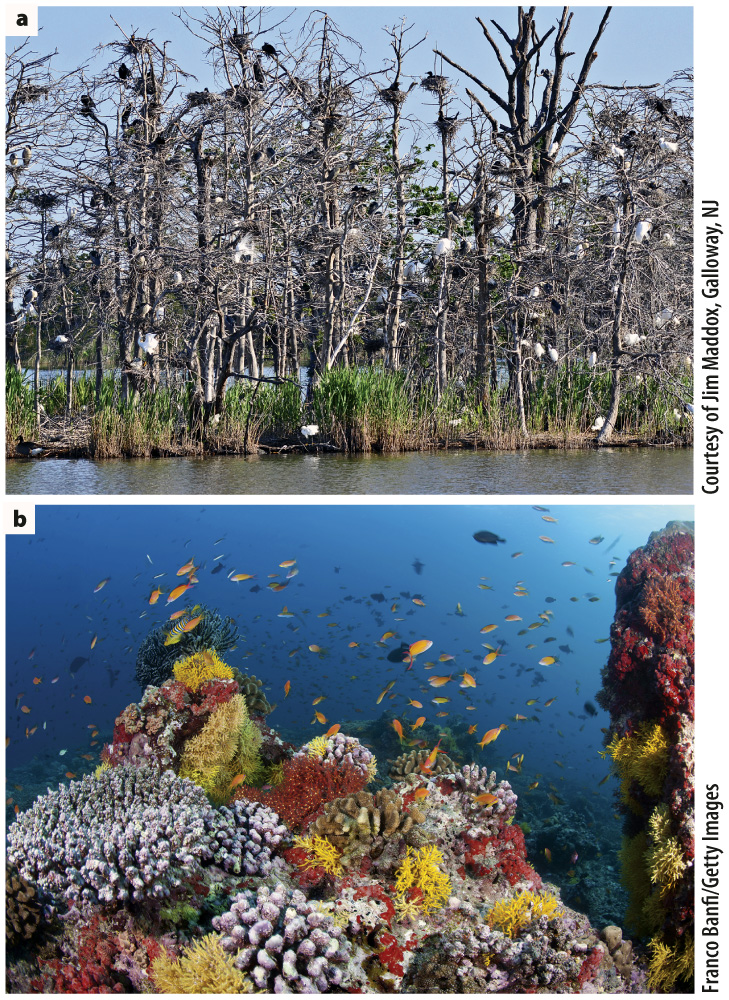Species compete for resources other than food.
Food is the resource we most often think of as the limiting factor for population growth and reproduction, but many species just require a place to stand, so to speak, or suitable conditions for a nest. Barnacle and mussel larvae compete for a place to attach on submerged rocks. Their food, tiny plankton, is almost always abundant and therefore is not as likely to limit population growth as attachment space is.
Similarly, plants compete for space in fields and forests so they can collect sunlight and obtain water and nutrients from the soil. Sunlight cannot itself be used up, but room to collect sunlight on the ground below can be filled. Nesting sites for birds that lay their eggs in tree hollows or on cliff faces can also be strongly limited by the availability of space, as can the settling of corals on reef surfaces (Fig. 47.5).
